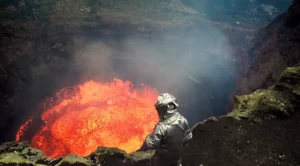Ten Most Deforestation-Affected Countries in The World
By TOI Desk
November 6, 2023
Update on : January 31, 2025

In the past two decades, the world has lost over 1.3 million square kilometers of forests, according to the World Bank. That’s an area larger than the size of England!
Deforestation doesn’t just mean the loss of trees; rather, it’s the conversion of a forested area to non-forested land. This conversion can be for many reasons, including agriculture, cattle ranching, mining, oil palm plantations, and infrastructure development.
Every year, these activities claim an estimated 18.7 million hectares of forests around the world. That’s the size of Wales. This article looks at ten countries where deforestation leads to three-quarters of their losses.

Table of contents
Global Deforestation: The Top Ten Countries Facing the Crisis
Brazil

Brazil is home to the world’s largest tropical forest– the Amazon rainforest.
Deforestation is a big problem in Brazil, as the country has the second-highest forest cover in the world.
The main drivers of deforestation in Brazil are cattle ranching and soybean production. Cattle ranching is the main cause of deforestation in the Amazon, as ranchers clear land to graze their cows.
Soybean production is also a major contributor to deforestation, as soybean farms are often built on newly deforested land.
In order to combat deforestation, Brazil has implemented several policies and initiatives. One such policy is the Amazon Forest Protection Law, which prohibits activities that contribute to deforestation. The Brazilian government has also created many protected areas in the Amazon, which are off-limits to development.
Despite these efforts, deforestation in Brazil continues at a high rate. Over 3,000 square kilometers of forest were lost in Brazil last year. This is a significant increase from the previous year and highlights the continued challenge that Brazil faces in combating deforestation.
Indonesia

Indonesia is the world’s top deforestation country. This is due to a variety of reasons, including the establishment of palm oil industries, conversion of forest to agricultural land, illegal logging, and forest fires.
The palm oil industry is a major driver of deforestation in Indonesia. Palm oil is used in a variety of products, including cosmetics, cleaning products, and food.
Indonesia is the world’s largest producer of palm oil, and production is expected to continue to increase.
Conversion of forest to agricultural land is another major cause of deforestation in this country. This is often done to make way for palm oil plantations. In addition, small-scale farmers clear forest land for cultivation.
Illegal logging is also a problem in Indonesia. This is due to a lack of law enforcement and weak government regulations. As a result, illegal logging is often rampant.
Forest fires are also a significant cause of deforestation in Indonesia. These fires are often started intentionally to clear land for palm oil plantations.
In addition, the dry conditions caused by the El Nino weather phenomenon make forests more susceptible to fires.
Peru

Peru is the seventh largest country in the world by area, and it is home to the Amazon rainforest. The Amazon rainforest is the largest in the world, and it is responsible for 20% of the world’s oxygen production.
Deforestation is a major problem in Peru, and it is estimated that the country has lost 30% of its forest cover in the last 40 years.
The primary cause of deforestation in Peru is illegal logging, and it is estimated that 60% of the timber extracted from the Amazon is taken illegally. The illegal timber trade is worth $17 billion annually, and it is one of the most lucrative criminal activities in the world.
Illegal logging is often carried out by loggers who are hired by timber companies. The loggers clear the forest using bulldozers and chainsaws. However, they seldom replace the felled trees, which leads to multiple long-term adversaries.
This type of deforestation is extremely damaging to the environment, and it is responsible for the loss of habitat for many animals.
Deforestation also contributes to climate change, and it is estimated that the Amazon rainforest sequesters 2.5 billion metric tons of carbon dioxide each year. This is equivalent to the emissions from 488 million cars.
The Peruvian government has taken some steps to combat deforestation, but much more needs to be done to protect the Amazon rainforest.
In 2011, the government passed a law that banned the sale of timber from illegally logged areas, but the law has not been effective in stopping the illegal trade. The government has also created several national parks in the Amazon, but these parks are not well-protected.
To combat deforestation, the Peruvian government needs to increase its enforcement of environmental laws and create more protected areas in the Amazon rainforest.
The Congo Basin
The Congo Basin is the world’s second-largest rainforest after the Amazon Basin, and it is the second-largest tropical forest in the world after the Amazon.
The Congo Basin is located in the Congo Basin of Africa, in the countries of Angola, Cameroon, the Central African Republic, the Republic of the Congo, the Democratic Republic of the Congo, and Gabon.
The place is home to the world’s second-largest population of tropical forest elephants, and it is the only tropical forest in the world where gorillas, chimpanzees, and bonobos live. The Congo Basin is also the world’s largest producer of palm oil.
Deforestation in the Congo Basin is caused by both natural and human factors. Natural causes of deforestation in the Congo Basin include forest fires, which are typically caused by lightning strikes, and clear-cutting for agriculture.
Human-caused deforestation in the Congo Basin usually results from subsistence agriculture, commercial agriculture, logging, and mining.
Deforestation in the Congo Basin is a major contributor to global greenhouse gas emissions, and it is contributing to the loss of biodiversity in the region.
Paraguay

– Paraguay’s total deforestation from 2000-2005 was 1,352,885 hectares — that’s an area about the size of Delaware.
– Most of this deforestation (85%) took place in the eastern part of the country, where forests are cleared for cattle ranching and soybean production.
– Paraguay has one of the highest rates of deforestation in the world, second only to Brazil.
– The country has lost nearly 60% of its forest cover in the last 50 years.
– Deforestation in Paraguay is responsible for the loss of habitat for many endangered species, including the jaguar, ocelot, and giant armadillo.
Paraguay is one of the top countries in the world when it comes to deforestation. In just five years, from 2000-2005, the country lost 1,352,885 hectares of forest cover area, which is about the size of Delaware.
The vast majority of this deforestation (85%) took place in the eastern part of Paraguay, where forests are cleared for cattle ranching and soybean production.
Paraguay has one of the highest rates of deforestation in the world, second only to Brazil.
In the last 50 years, the country has lost nearly 60% of its forest cover. This has had devastating impacts on the wildlife of Paraguay, as deforestation is responsible for the loss of habitat for many endangered species, including the jaguar, ocelot, and giant armadillo.
The loss of forest cover in Paraguay also has profound implications for the country’s climate. Forests play an important role in regulating the Earth’s climate, and the loss of forests in Paraguay has contributed to the country’s increasing temperatures and weather extremes.
The deforestation of Paraguay is a complex problem, with many factors contributing to the problem. However, the primary cause of deforestation in the country is the clearing of land for cattle ranching and soybean production.
To address the issue of deforestation in Paraguay, it is essential to address the underlying causes of the problem.
Malaysia
Deforestation in Malaysia is a major environmental issue and it is one of the top causes of climate change. The Malaysian government has been trying to control deforestation by enacting various policies and regulations, but the problem persists.
The main cause of deforestation in Malaysia is illegal logging. Logging is the clear-cutting of trees in an area where they are not naturally found. This practice is often done to create new farmland or to harvest timber.
Illegal logging is rampant in Malaysia because it is cheaper than legal logging, and it is not well regulated. This results in the loss of many trees, which contributes to deforestation.
Deforestation has many negative impacts on the environment. It contributes to climate change, creates water shortages, and destroys habitat. Deforestation also has an impact on the economy, as it can lead to the loss of jobs and the decline of industries that depend on forests.
The Malaysian government has taken some steps to try to control deforestation. They have placed a moratorium on new logging concessions, and they have increased enforcement of existing laws.
However, illegal logging is still a major problem in the country.
To effectively control deforestation, the Malaysian government needs to do more to reduce illegal logging and to promote sustainable forestry practices.
Bolivia

It is estimated that between 1990 and 2005, Bolivia lost 22% of its forests. That is an area the size of Massachusetts!
There are many reasons why this is happening, but one of the main reasons is that people are cutting down trees to make room for crops and pastureland. A significant portion is also lost to illegal logging.
Meanwhile, as the population of Bolivia continues to grow, more and more people are moving into areas that were once natural forest reserves.
Deforestation is exerting a serious impact on Bolivia’s environment. While it is continually contributing to climate change. It is also leading to a decline in the populations of many animals, including engendered ones. Rampant deforestation is also making it more life difficult for people living in suburbs as it is getting more and more difficult for them to access wood needed for cooking and heating.
The government of Bolivia has taken some steps to try to reduce deforestation, but so far, the initiatives haven’t been enough.
In 2008, the government passed a law that required landowners to replant trees after they have been cut down. However, this law is not being enforced strictly. And, even if it were, it would take many years for the trees to grow back which is not compatible with the rate at which trees are being felled. Thus, it is likely that Bolivia will continue to lose its forests at a high rate for many years to come.
Sudan
Deforestation poses a significant environmental challenge in Sudan, a country characterized by its vast and diverse landscapes.
In Sudan, deforestation primarily stems from the expansion of agriculture, particularly small-scale farming and the cultivation of commercial crops.
The clearing of land for agriculture, along with logging for timber and fuelwood, is contributing to a steady loss of forest cover in the country. This trend is concerning, as Sudan’s forests play a crucial role in mitigating desertification and maintaining biodiversity.
The Sudanese government and international organizations are working to address this issue through afforestation and reforestation programs, alongside efforts to promote sustainable land management practices.
Zimbabwe
Zimbabwe is grappling with its deforestation crisis, largely driven by population growth, agricultural expansion, and illegal logging.
The country has experienced a substantial reduction in its forested areas over the years, leading to soil erosion, decreased water quality, and loss of natural habitat for wildlife.
The government has introduced policies aimed at curbing deforestation and restoring forests, but these efforts are challenged by various economic and social factors.
Promoting sustainable forest management and educating local communities on the importance of preserving forests are essential components of Zimbabwe’s strategy to combat deforestation.
Nepal

Nepal, nestled in the Himalayas, faces deforestation challenges tied to agriculture, infrastructure development, and resource extraction. Rapid urbanization and a growing demand for timber and fuelwood have placed immense pressure on the country’s forests.
Nepal’s lush woodlands are critical in maintaining ecological balance, conserving biodiversity, and safeguarding against landslides and avalanches. The Nepalese government, supported by non-governmental organizations and international partners, is implementing conservation and reforestation projects to combat deforestation.
Additionally, community forestry programs have empowered local populations to actively participate in forest preservation and sustainable resource management, contributing to Nepal’s ongoing efforts to address this environmental concern.
Read more: Ten Most Deforestation-Affected Countries in The World













